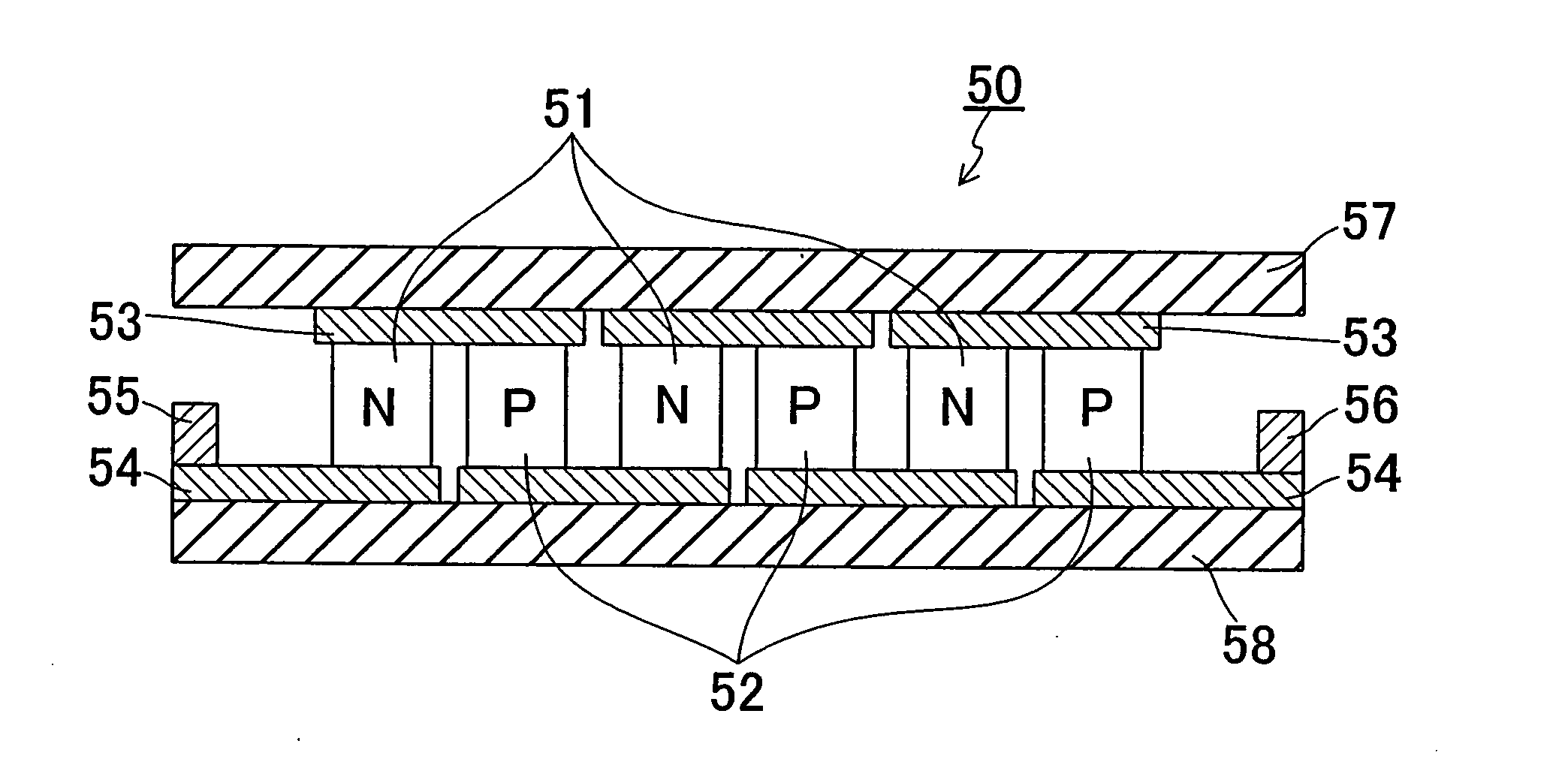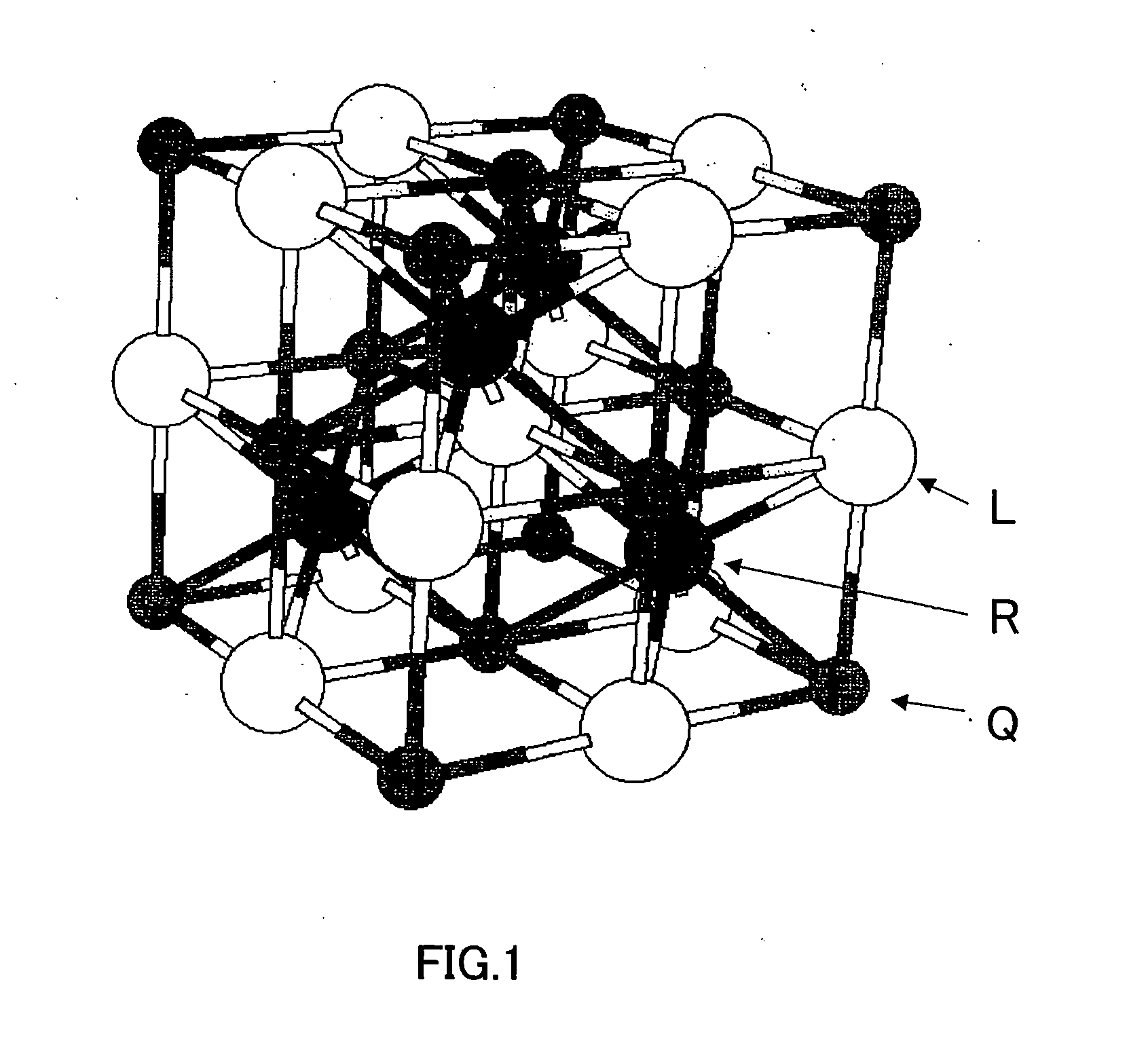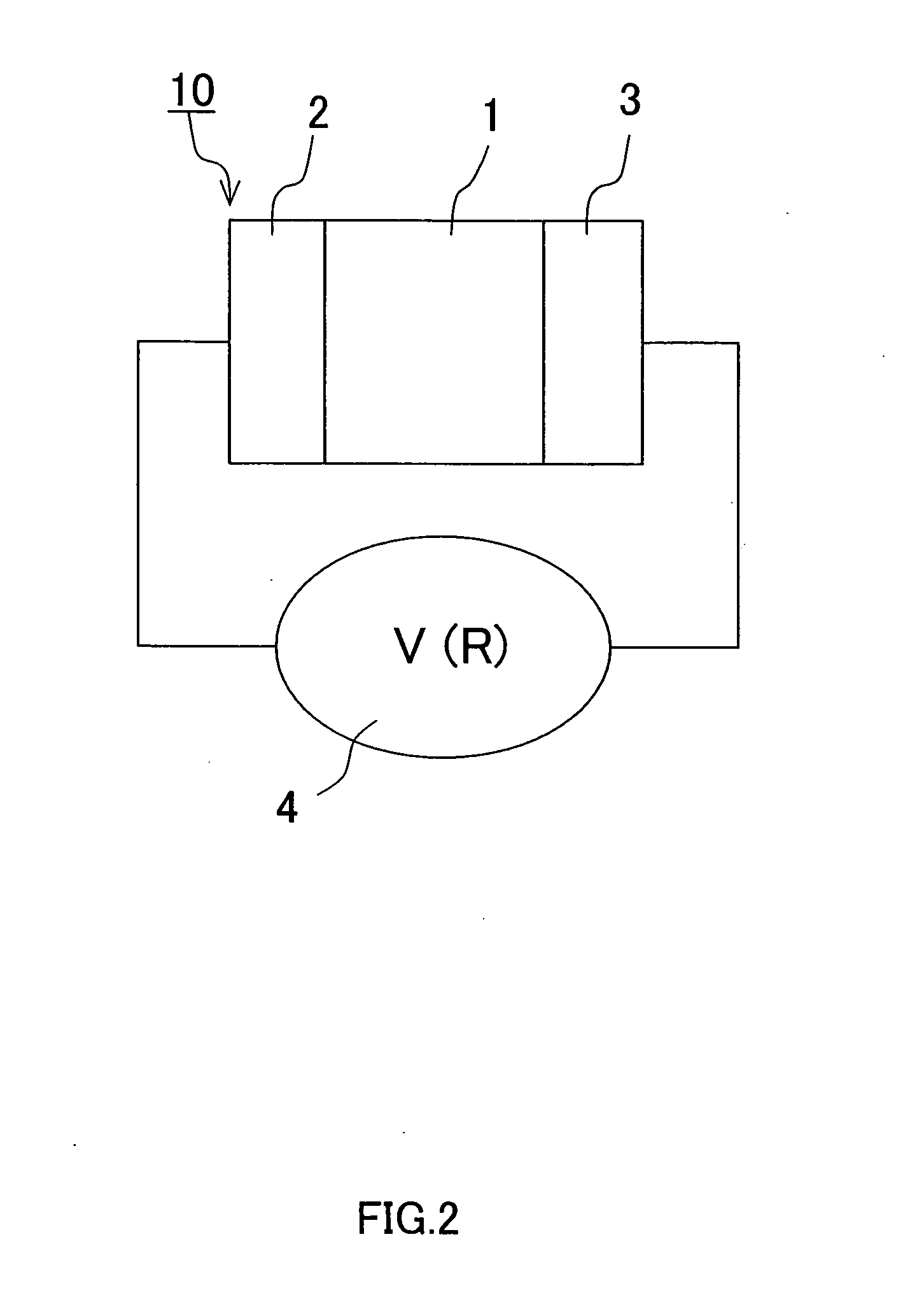Thermoelectric conversion material, thermoelectric conversion element using the material, and electric power generation method and cooling method using the element
a technology of thermoelectric conversion element and thermoelectric conversion material, which is applied in the manufacture/treatment of thermoelectric devices, generators/motors, lighting and heating apparatus, etc., can solve the problems of environmental pollution, material adverse effects, and difficulty in varying independently of one another
- Summary
- Abstract
- Description
- Claims
- Application Information
AI Technical Summary
Benefits of technology
Problems solved by technology
Method used
Image
Examples
Embodiment Construction
[0054] Half-Heusler alloys having the compositions of NbCoSn and NbCo(Sn.sub.1-pSb.sub.p) (p=0.01 or 0.02) were prepared, and their characteristics were measured.
[0055] Fabrication Method
[0056] As the source materials for Nb, Co, and Sn, powders of respective simple substances having a purity of 99.9% were prepared, and as the source material for Sb, powder of the simple substance having a purity of 99.7% was prepared.
[0057] These materials were weighed to be in the stoichiometric proportions based on the above-noted compositions, then mixed until the mixture becomes uniform, and formed into a pellet form. The pellets were placed on water-cooled copper (hearth) and the pressure was reduced to 2.0.times.10.sup.-3 Pa. Thereafter, an Ar gas was introduced, and the pellets were arc-melted in an Ar gas atmosphere at 300 mmHg (about 0.04 MPa). At this time, the arc voltage was 18 to 20 V, and the arc current was 120 to 130 A. The alloy materials obtained by the arc melting were repeatedly...
PUM
| Property | Measurement | Unit |
|---|---|---|
| lattice constant | aaaaa | aaaaa |
| lattice constant | aaaaa | aaaaa |
| temperature | aaaaa | aaaaa |
Abstract
Description
Claims
Application Information
 Login to View More
Login to View More - R&D
- Intellectual Property
- Life Sciences
- Materials
- Tech Scout
- Unparalleled Data Quality
- Higher Quality Content
- 60% Fewer Hallucinations
Browse by: Latest US Patents, China's latest patents, Technical Efficacy Thesaurus, Application Domain, Technology Topic, Popular Technical Reports.
© 2025 PatSnap. All rights reserved.Legal|Privacy policy|Modern Slavery Act Transparency Statement|Sitemap|About US| Contact US: help@patsnap.com



